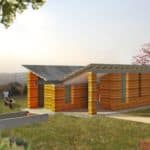Breaking Out of Silos: Leave Your Disciplinary Ego at the Door
Author’s note: I’ve been thinking a lot about silos and working across disciplines since I joined Praekelt. Recently, sitting on a panel with representatives of other international organizations working on youth and reproductive health, I heard about the interdisciplinary approach created by Population Services International (PSI) for the Adolescents 360 project. I was struck by how Rena Greifinger, technical adviser for Youth & Girls at PSI, described the work as “letting go of your disciplinary egos.” We started discussing these ideas and decided to share our thoughts.
2016 saw the launch of the 2030 Agenda for Sustainable Development. World leaders committed to a new set of global goals to alleviate poverty and achieve greater equity in the next 15 years. One of the key lessons we learned from tackling the Millennium Development Goals was that to make real progress, we need to break out of our development silos and engage a range of partners and perspectives to solve complex problems.
In the international development field, we are seeing the desire for partners to work across disciplines gain traction. Donors are investing more in tackling structural drivers of social problems, which call for multi-sectoral interventions and systems-level change. Implementers are recognizing that problem-centered approaches – approaches in which we design for a specific problem – need to be replaced with people-centered approaches. A 15-year-old girl growing up in rural Tanzania, for instance, likely faces a range of barriers to her ability to achieve her dreams: limited access to education; poor health information and services; gender inequality and gender-based violence; limited family and social support; environmental degradation around her and poor access to energy sources; amongst countless others. To truly understand and support this girl, development practitioners need to work beyond their individual areas of expertise and bring together experts and perspectives that will solve the problems at the root of her inequity.
What we have also learned in the past few years is that implementing meaningful cross-sector and interdisciplinary approaches is far easier said than done. The disciplines and sectors that make up development are each, on their own, an entire body of work. They are deep areas of study, with long histories, requiring specialized knowledge in order to apply them to complicated environments and complex problem-solving. It is uncommon to find an expert who works across more than one.
Even when organizations work across sectors, the people within often remain in their silos because: the systems we have in place make it hard to break out of these silos; organizations are structured around specific technical areas; professionals develop deep technical knowledge and skills in those areas; social impact is often evaluated based on narrowly focused metrics (e.g. measuring how many men get tested for HIV in a specific geography during a specific time period is far easier than measuring how education, nutrition and economic empowerment coalesced to lower HIV prevalence); and the way grant-making is usually done continues to support this system.
The benefits of breaking out of a siloed model, however, can be enormous. Sometimes, this can come in the form of collaboration within a sector, such as the clinics, international organizations and NGOs that came together under the instrumental leadership of the South African Department of Health for MomConnect – a national platform leveraged to improve maternal health care in the country. Many of the partners involved may not have specialized in maternal health care on their own, but together were able to join forces for a powerful product. Each partner strove to think of the issue with the lens of their speciality but within a larger context. At Praekelt, where we specialize in service design and technology development, the ability to integrate services and understand the larger needs of the ecosystem help make us strong partners who prioritize user-centered approaches. This has contributed greatly to our thinking and participation on Girl Effect Mobile, a technology project focused on girls and development which leverages these collaborative models.
Another example is PSI’s Adolescents 360 project, which aims to increase access to and uptake of voluntary modern contraception among 15- to 19-year-old girls in Tanzania, Ethiopia and Nigeria. Adolescents 360 is championing an interdisciplinary approach that, through youth-adult partnerships, brings together public health, social marketing, human-centered design, developmental neuroscience and cultural anthropology. Rather than simply working parallel to one another on their own pieces of the project, or handing pieces of work from one partner to the next “relay-race style,” the Adolescents 360 consortium is thoughtfully weaving key components of each discipline into the fabric of each project activity.
For instance, as Rena described, each partner applied its specific lens to the development of qualitative research tools for the formative research: “Our human-centered design partner IDEO.org brought us the development of ethnographic research activities that lead with empathy and allowed researchers to immerse deeply in the human experience of the problems we are trying to solve. Our developmental science partner at the Center on the Developing Adolescent brought us the training and guidance to meaningfully engage young people as partners in conducting research and analyzing data. PSI brought the rigor of scientific research methodology, market development analysis and audience segmentation. And our anthropologist built our capacity to recognize how our cultural biases, often invisible to us, can influence the way we conduct research and analyze data.”
Bringing together these complex disciplines – each multifaceted on their own – takes a significant investment of people’s time, humility, honesty and trust. It takes being willing to sacrifice one’s pure interpretation of his/her area of work in order to serve the project better. It means figuring out which components of these different disciplines will work to inform and transform one another, while also breaking new ground in how we design and deliver health programs for adolescents, youth and women.
As MomConnect reaches its 1 million registered mothers mark in a few weeks, and Praekelt expands its maternal health platforms to Uganda and Nigeria, we can see the challenges and rewards of working across sectors. Key to the success – and failures – of many tech platforms comes from the strength of community buy-in, as well as the ability to integrate private and public service offerings as part of the resources the technology is providing. For a health platform, this is not limited to just clinics and hospitals, but extends to depending on the work of community members and local teams, as well as establishing relationships with Mobile Network Operators to provide services on zero-rated platforms.
We believe that in order to create lasting social impact, program designers, implementers and donors must embrace multidisciplinary approaches and invest the resources and effort needed to execute them effectively. This is the only way we will make real progress toward achieving the Sustainable Development Goals. We need to work together, and leave our egos behind.
This post originally appeared on Praekelt.org and is reprinted here with permission.
Ambika Samarthya-Howard is the head of communications at the Praekelt Foundation.
Photo courtesy of Ideo.org
- Categories
- Health Care



